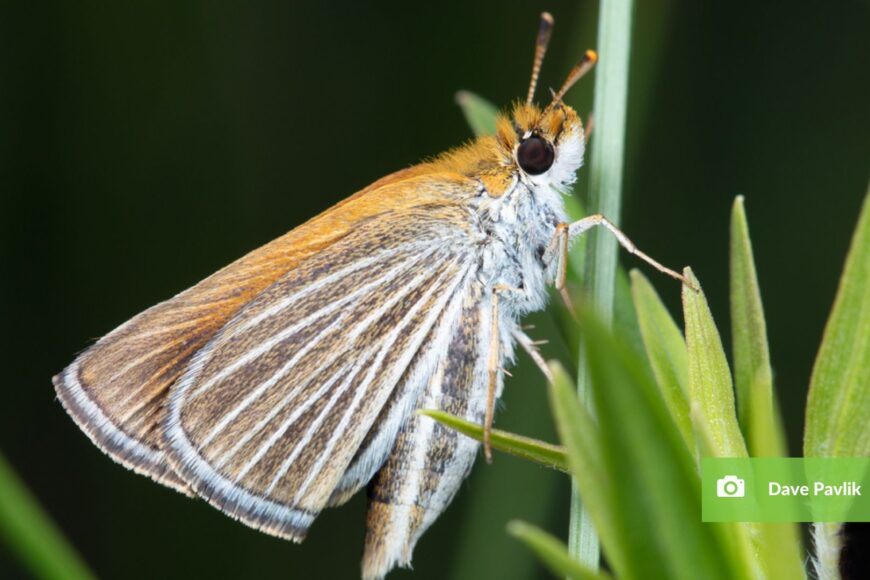Dawson Trail Dispatch, written by Norm Gregoire, June 2023
Page 10 https://issuu.com/dispatch222/docs/dawson_trail_dispatch_june_2023
When you think of an endangered species, which one do you picture? Most of us may think of a species like a giant panda, mountain gorilla, or orangutan. Now, what do these animals represent to you? I think most of us recognise these species as symbols of conservation with critically low populations. Did you know that we have our very own symbol of conservation right here in the tall-grass prairie that has a lower population than all of these previously listed species?
The Poweshiek skipperling is a butterfly, smaller than a loonie in size. They are brown and orange in colour, with silver veins running through the underside of the hind wings. As part of the skipper family, they have a skipping movement during their flight. In truth, you would need an expert’s eye to differentiate them from other members of the skipper family.
Like all butterflies, the Poweshiek skipperling undergoes distinct stages of its life, generally taking one year to complete. The adult is active from the end of June to July for up to three weeks. At this point, the main concerns are breeding and laying eggs. The eggs are laid on blades of grass, or sedge and when the eggs hatch, the caterpillars spend their time feeding on the nearby grasses. As winter approaches, they head to the bases of plants to overwinter under the snow cover. As spring and warmer weather approach, the caterpillar forms a chrysalis until it emerges as an adult to begin the process again.
In Manitoba, Poweshiek skipperlings are dependent on tall-grass prairie habitat, which is concerning due to its status as an endangered ecosystem. It is important for the butterfly to have an abundance of larval host plants and native nectar plants, usually found in the transition zone from wetland to drier upland areas.
Another concern would be the lack of genetic diversity in the species. Although it is difficult to gauge the population of Poweshiek skipperling, it is estimated at anywhere from a few hundred to one thousand. The only place in Canada where Poweshiek skipperling are found is in Manitoba’s Tall Grass Prairie Preserve. There is one other small population near Flint, Michigan, in the United States.
You may be asking, “What is being done to protect this species at risk?” The Poweshiek skipperling conservation project is a collaborative effort with the Assiniboine Park Conservancy, Nature Conservancy of Canada, Minnesota Zoo, US Fish and Wildlife Service, University of Winnipeg, and other partners in Canada and the United States. The Assiniboine Park Conservancy is responsible for a head-starting and rearing program for the Manitoba population, with the aim of increasing the wild population size by raising the skipperlings through their most vulnerable life stages and providing optimal conditions for breeding adults. This project is supported by Environment and Climate Change Canada. In 2018, six adults were released into the wild. Every subsequent year has seen increases, with 2022 being particularly successful with 191 releases!
Once-in-a-lifetime Opportunity!
The Shared Legacy Partnership and Assiniboine Park Conservancy are excited to announce that you have a chance to witness the release of the globally imperiled Poweshiek skipperling into the wild! You will be able to meet the team responsible for this incredible conservation work, and they will answer questions in regard to the program and all the hard work invested. If you are interested in this amazing opportunity, contact Norm at info@sharedlegacymb.ca. Due to the sensitivity of the release, only one lucky community member and their family will be allowed to join.

